We tried eating mostly Singapore-grown food for a week - here’s what happened
SINGAPORE: Prawns, fish, mushrooms and green vegetables are bubbling in a light broth. It’s like any other steamboat dinner, except the ingredients here were grown and harvested in Singapore.
The vannamei prawns, which were still wriggling in a tank when I bought them, are sweet and crunchy; the slices of red snapper and seabass firm and fresh.
There are shiitake and oyster mushrooms, fresh quails’ eggs and a variety of vegetables – including local tang-o, the aromatic chrysanthemum greens essential for steamboat.
Imported fishballs and pork were also on the menu, but about 75 per cent of the dinner came from Singapore farms.
This was just one of the meals I ate over a week-long experiment to find out how viable it is to consume as much local produce as possible, whether by cooking or seeking out farm-to-table restaurants.
It seemed a daunting challenge at first.
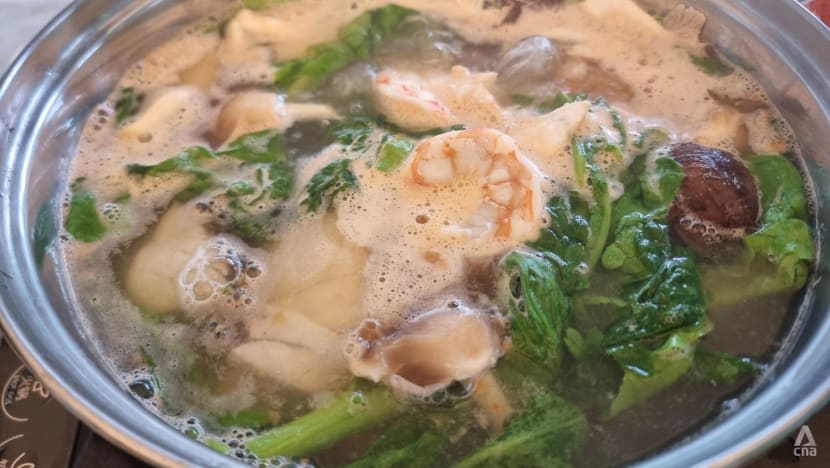
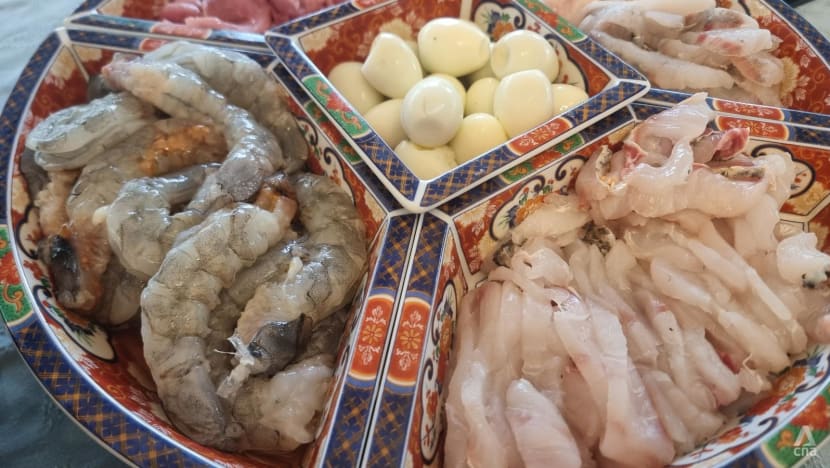
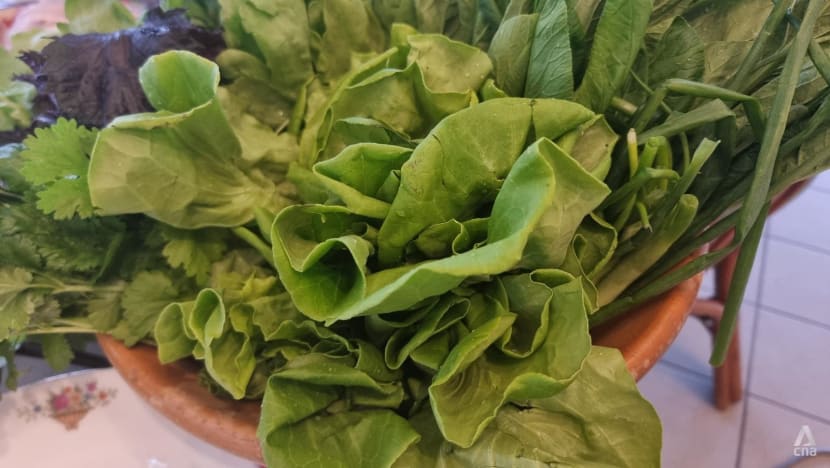
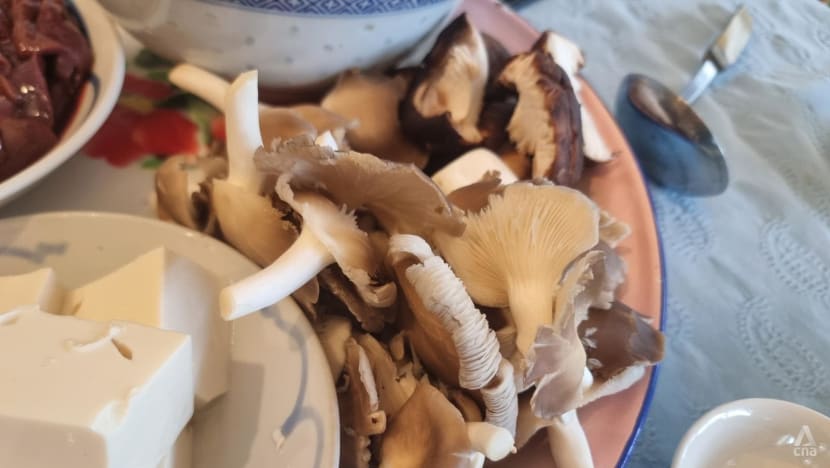
Walk into any supermarket in Singapore and there's a cornucopia of produce from all parts of the world. But for those seven days, my grocery shopping was restricted to a few brands of eggs and a little section of local vegetables I could measure by spreading out my arms.
I did find fish farmed in Singapore at one Fairprice supermarket, and I also shopped at a farmers' market in Kranji.
But I had better luck online: It was surprisingly easy to order seafood on my phone, straight from the kelong, and to get vegetables and other produce from online store Redmart.
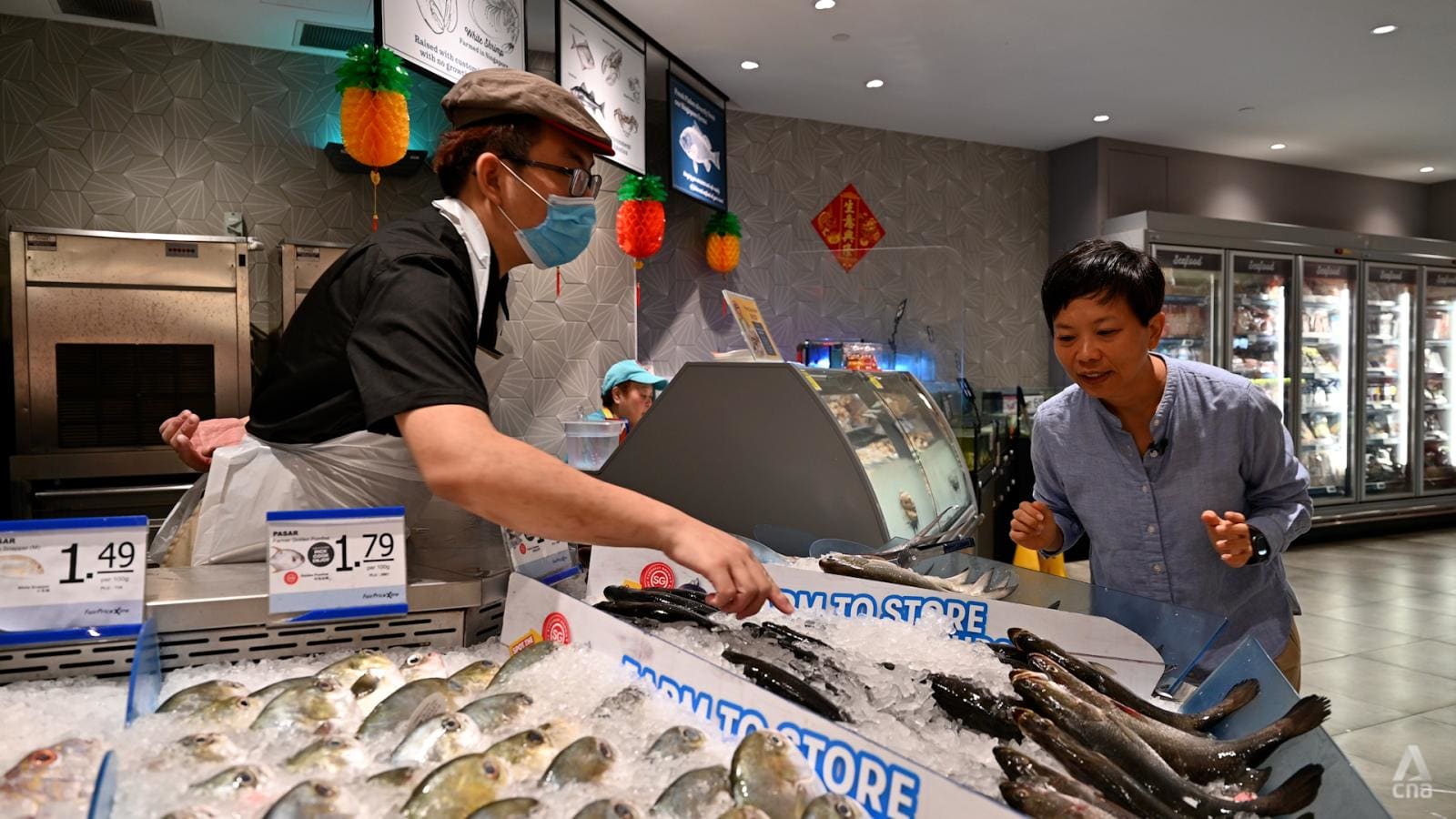
As for eating out, options were limited but not as dire as imagined. Restaurants that use at least 15 per cent local produce - in certain food categories such as eggs, leafy vegetables, fish or mushrooms - are listed on the Singapore Food Agency’s (SFA) website.
Many of these are catering services or hotel chains, but I managed to dine at five eateries serving different cuisines - King Grouper Fish Soup, Rustica, Poison Ivy Bistro at Bollywood Farms, Bistro at GardenAsia and Enjoy Eating House and Bar.
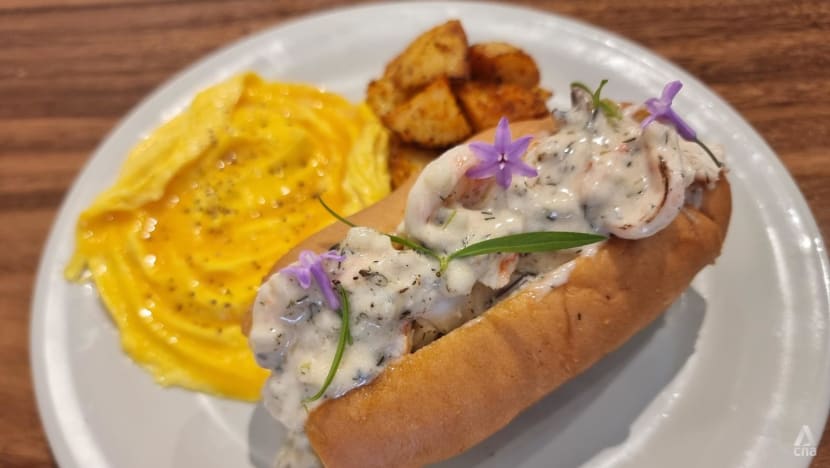
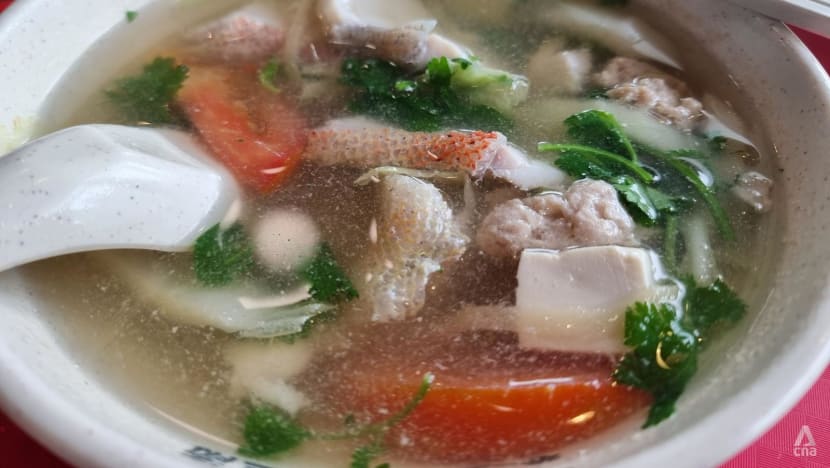
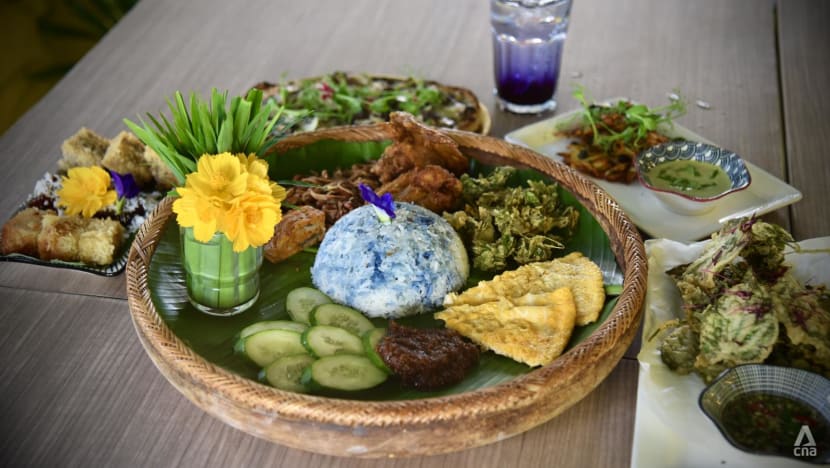
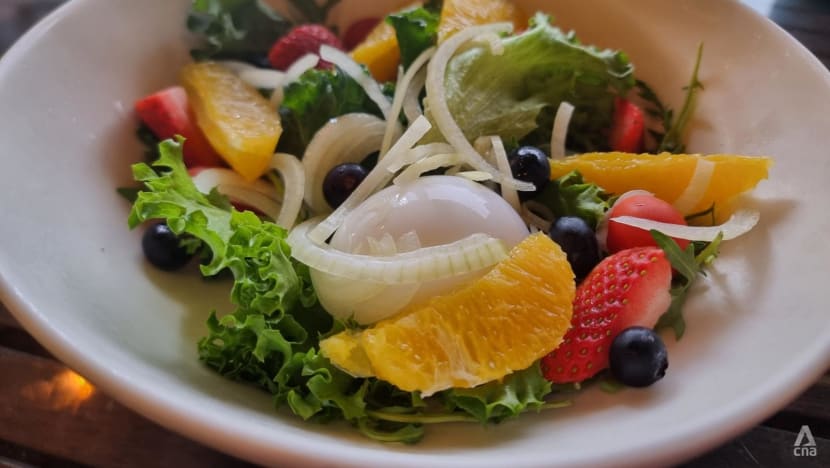
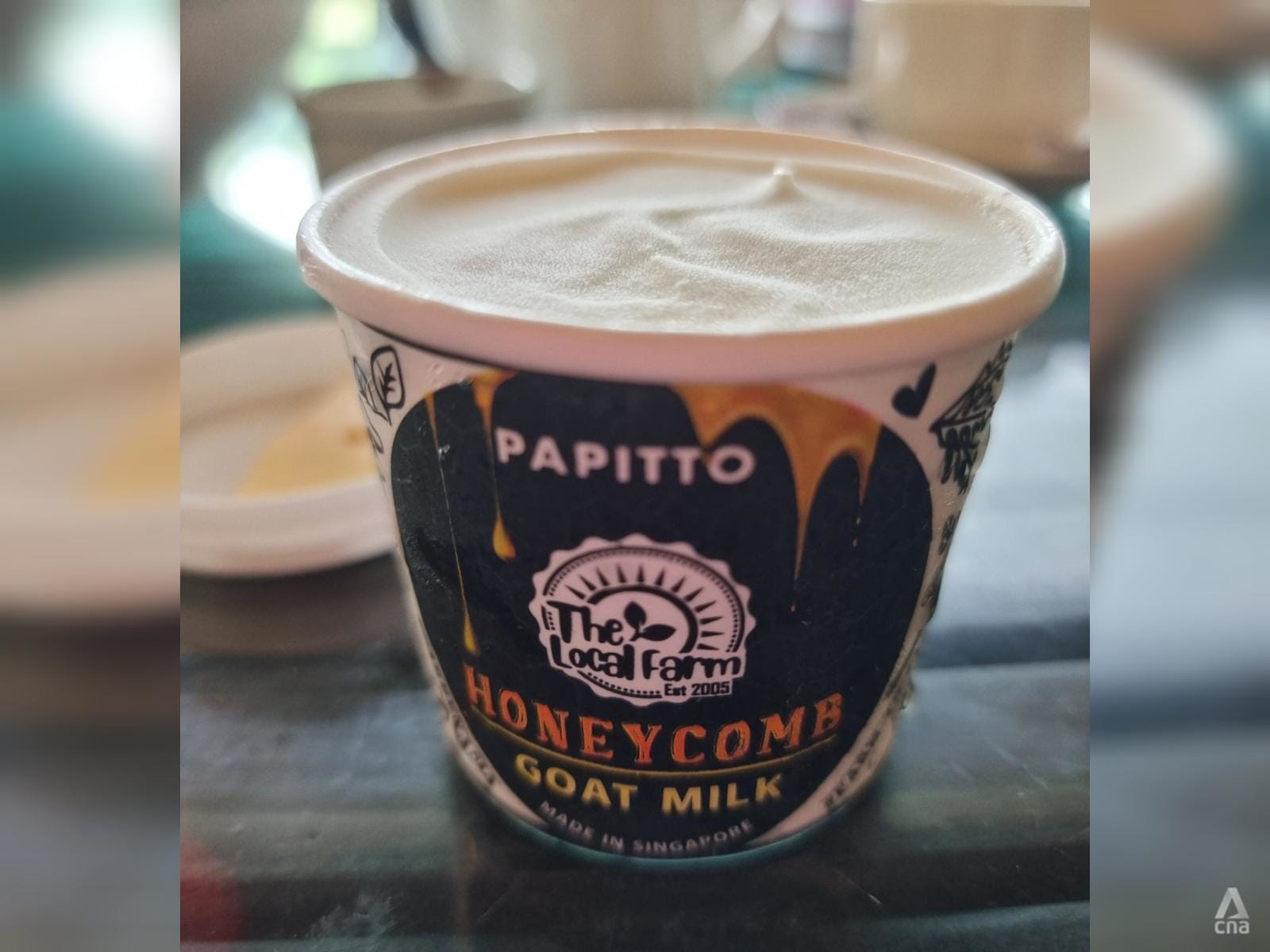
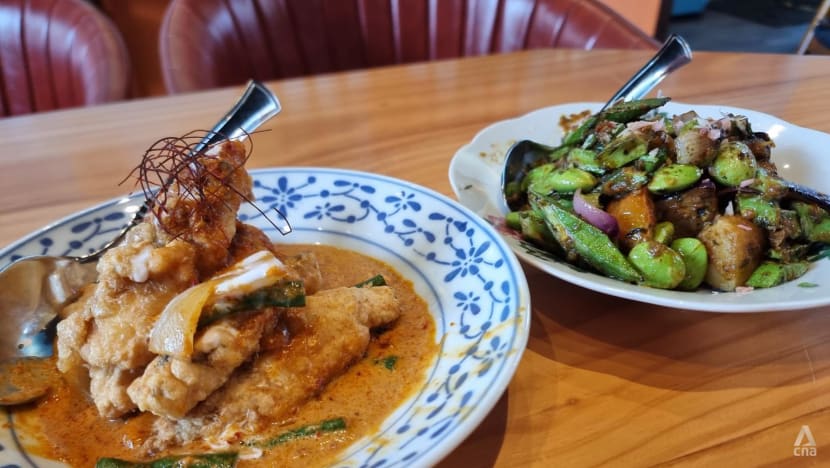
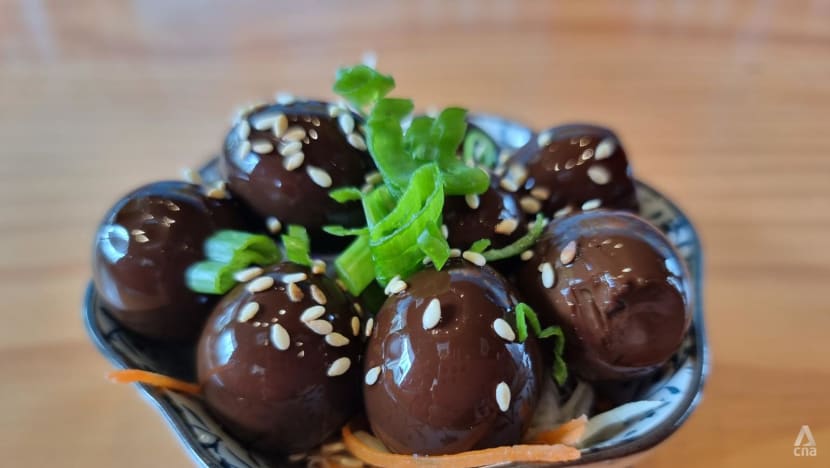
At the end of the week, it turned out to be easier than expected to find food grown in Singapore - and entirely possible to survive on a diet of mostly local produce.
That's especially if one is pescatarian, since the made-in-Singapore offerings are mainly fish, some seafood, eggs and green vegetables. The only other locally sourced meat I had were frog legs.
Therein lies the issue: There’s just so much choice available in Singapore that that no one really has to restrict themselves to homegrown produce.
After all, the country imports about 90 per cent of its food. While this leaves Singapore vulnerable to supply disruptions due to disease outbreaks and geopolitical tensions, SFA hedges its bets by diversifying food import sources.
The push to grow more food locally is thus part of a wider food security strategy, but not the only egg in the basket. Responding to CNA’s queries, SFA described the local agri-food sector “as a form of insurance during food supply disruptions”.
The goal is "30 by 30" - to grow 30 per cent of Singapore's nutritional needs locally by 2030, which is just five years away now.
Yet with widely reported headwinds faced by homegrown farms - delays in development due to the COVID-19 pandemic, increases in energy and manpower costs and a lack of demand for local produce among them - it can seem like Singapore is nowhere near that food security goal.
From 2022 to 2023, local production of vegetables went down by 15 per cent and seafood by 8 per cent, according to the most recently available Singapore Food Statistics report.
The report showed that local farms produced 3.2 per cent of vegetables consumed in Singapore in 2023, and 7.3 per cent of seafood.
The “eggception”: Hen shell eggs laid in Singapore made up 31.9 per cent of consumption, exceeding the 30 by 30 goal.
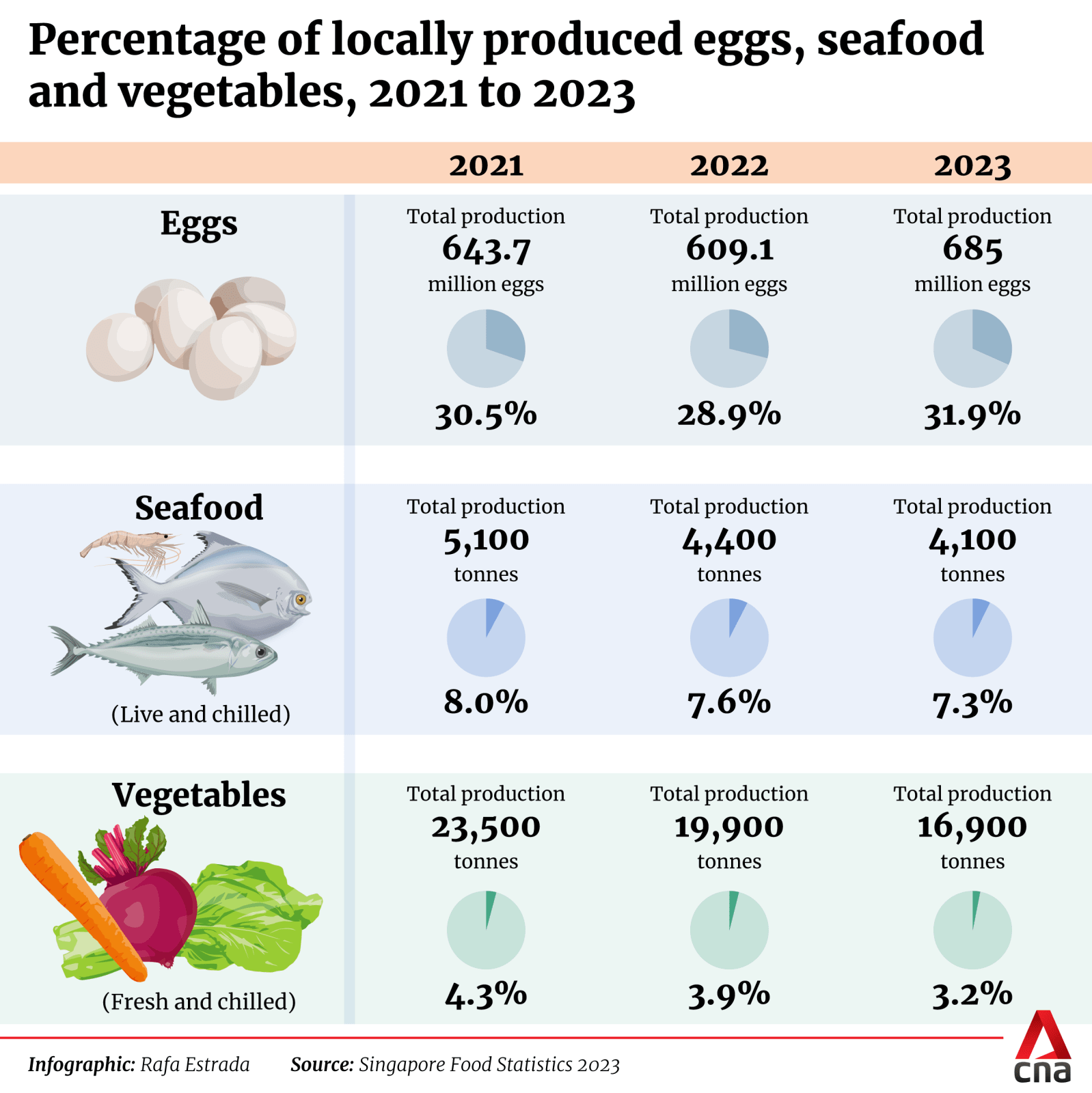
Qian Hu Fish Farm CEO Yap Kok Cheng told CNA there were a few issues affecting fish farmers, and that he sees the dip in seafood production as a “transition period”.
“The farmers are able to produce, but they have to face competition from the imported (produce) which is cheaper, so the uptake is not that ideal,” he said.
“The second thing is, because I think we are moving towards a more high-tech farming environment … there will be a period where the old farms have to go, the new farms have to come up.”
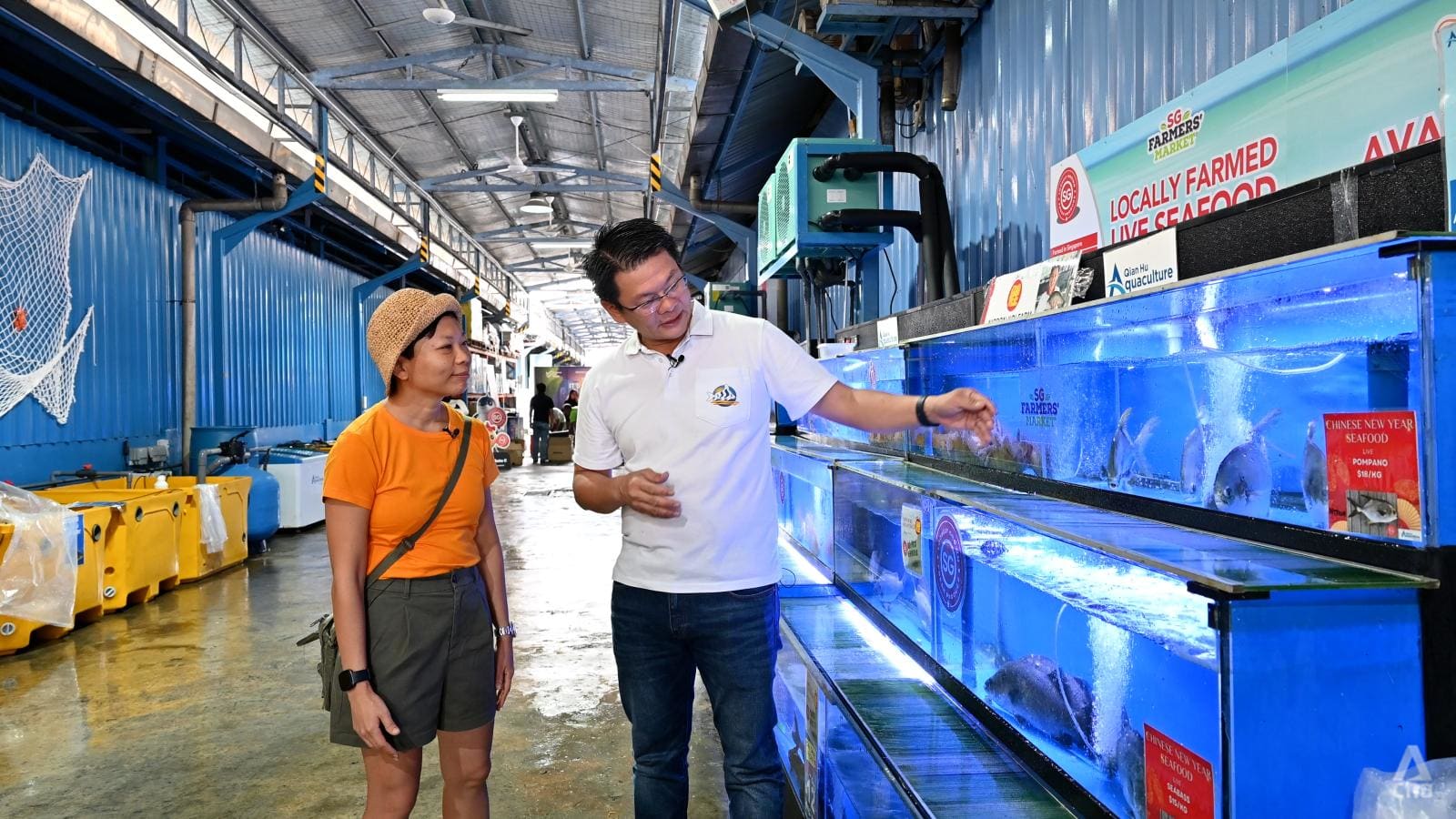
Egg farming in Singapore meanwhile has had a headstart in terms of production yields, according to Professor William Chen, director of the Nanyang Technological University’s food science and technology Programme.
“Egg farms in Singapore here are not nascent and therefore any expansion would be less challenging,” he said.
“As compared with egg farms, urban vegetable farming is new not just in Singapore but across the world. Therefore it faces many challenges that we don’t see with egg farms, from infrastructure to energy to consumer buy-in.”
He added that local farm yields depend on “tech readiness”, and any new technology takes time to mature.
THE COST BARRIER
In 2024, a YouGov survey found that lower prices are by far the most common motivation for preferring imported over Singapore-grown produce.
Over my one-week challenge, I had 15 homecooked meals and five meals at restaurants serving Singapore produce, and I estimate that about 70 per cent of what I ate was local produce.
The total cost of both raw ingredients for cooking as well as eating out came up to about S$200 (US$148).
What I ate in a week
DAY 1
Breakfast Soft-boiled egg* Toast with cream cheese and marmalade Papaya*
Lunch King Grouper fish soup*
Dinner Mixed green salad* Basil* pork Bean sprouts* with tau kwa and salted fish Brown rice Strawberries and kiwi
DAY 2
Breakfast Soft-boiled egg* Green salad*
Lunch at Rustica Seafood roll made with prawns* and mussels* Mushroom murtabak with lion's mane mushrooms* Coconut water
Dinner Mixed green salad with ice plants* Steamed seabass* Stir-fried xiao bai cai* Brown rice
DAY 3
Breakfast Soft-boiled egg* Plain goat’s milk* Chocolate goat’s milk*
Lunch at Bollywood Farms Blue peaflower* nasi lemak Vegetable* pakora Moringa* and wild pepper leaf* fritters Truffle mushroom* flatbread Dessert platter (kueh kosui, kueh bingka, banana* bread) Blue peaflower* soda
Dinner Mussels* in tomato sauce Steamed garlic live clams* Dou miao* stir fry Vegetable and yong tau foo curry Brown rice
DAY 4
Breakfast Spinach* soft-serve ice cream Tempura fish* bites, prawn* and sweet potato* leaves Tempura oyster mushrooms* Mint* lemon honey drink
Lunch Green smoothie (wheatgrass*, kale*, balonglong*, cucumber, blueberries, apple) Apple, mandarin oranges, dried fruit and nuts
Dinner Salt-baked seabass* Sambal winged beans* Salad with rainbow chard*, tomato, cucumber and broccoli sprouts* Brown rice Papaya*
DAY 5
Breakfast Scrambled eggs* Baked beans Sourdough bread Salad with rainbow chard*, tomato, cucumber and broccoli sprouts* Blue peaflower* tea Chocolate goat's milk*
Lunch at Bistro @ GardenAsia The Local Farm salad* Honeycomb goat's milk* ice cream Pot of tea
Dinner Steamboat with: Red snapper* and seabass* fish slices Live vannamei prawns* Vegetables* - tang-o, xiao bai cai, butterhead lettuce, coriander Mushrooms* - oyster, shiitake Quails' eggs* Fishballs Pork slices Tofu
DAY 6
Breakfast Sunny side up eggs* Pandan* almond cookies Plain goat's milk*
Lunch Crispy barramundi* red curry Braised quails' eggs* Sambal stir-fry of lady's fingers, petai and brinjal White rice
Dinner Frog legs* in ginger and oyster sauce Leftover steamboat soup Brown rice Papaya*
DAY 7
Breakfast Banana* wholemeal pancakes with honey Soy bean milk
Lunch Grilled seabass fillet* Steamboat soup* Green salad* Ginger frog legs* Brown rice
*local ingredients
It's not straightforward to calculate how much more I spent on local food all week compared with a regular week. But most items were pricier - I can safely say it does cost more to eat local.
At Fairprice and Sheng Siong supermarkets, three packets of any imported green leafy vegetable can be bought for S$1.80 - a price local farms can't match.
At Fairprice's Vivocity outlet, local seabass was selling at S$1.69 per 100g. The average price of seabass in Singapore in December 2024 was S$1.19 per 100g, according to consumer price data from SingStat.
A few items, like fresh shellfish and goat’s milk, actually didn't cost more.
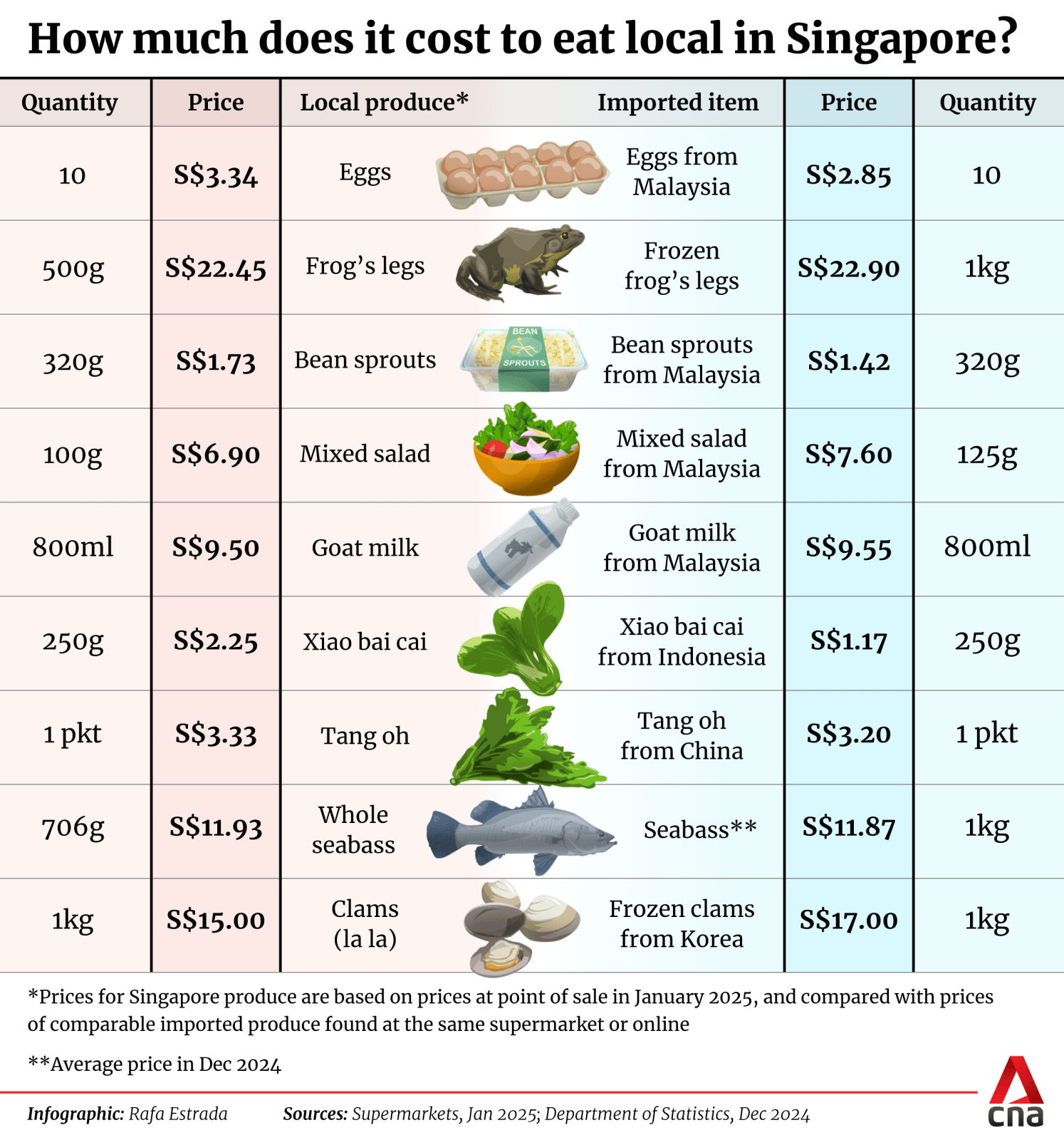
But honestly, these numbers aren’t everything.
Over the week, I had some fresh, delicious produce that I’d buy again, even if slightly more expensive than an imported alternative.
The frog legs I had were plump and succulent; I had excellent fish (cooked every way) and I found some new salad leaves to add to my daily menus going forward.
My one issue was that by Day 5, I felt like I couldn’t eat another piece of seabass or have more eggs, no matter how fresh they were.
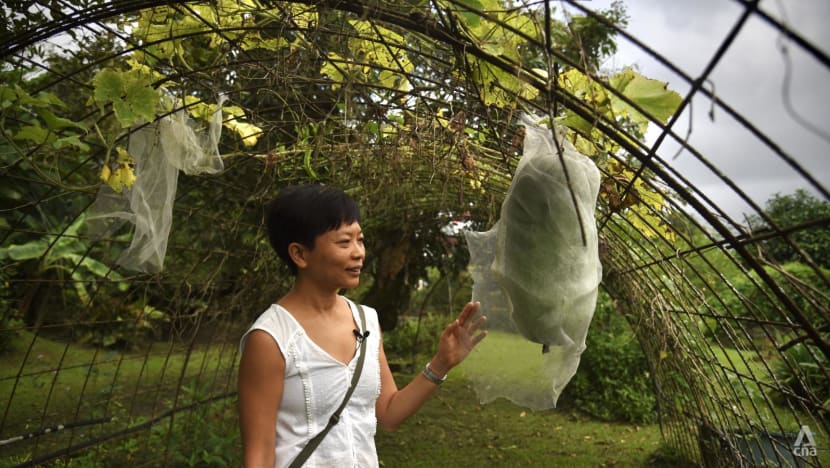
There was more variety in the vegetables - I could choose from bean sprouts, xiao bai cai, lettuce, kale, lady’s fingers, swiss chard, ice plants, tang-o and many more.
But the only local fruit I found for sale was bananas at Bollywood Farms, so most of the fruit I ate was imported.
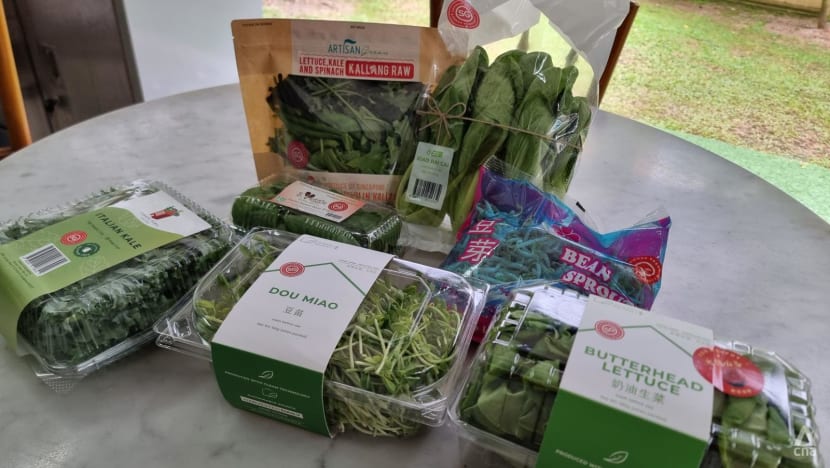
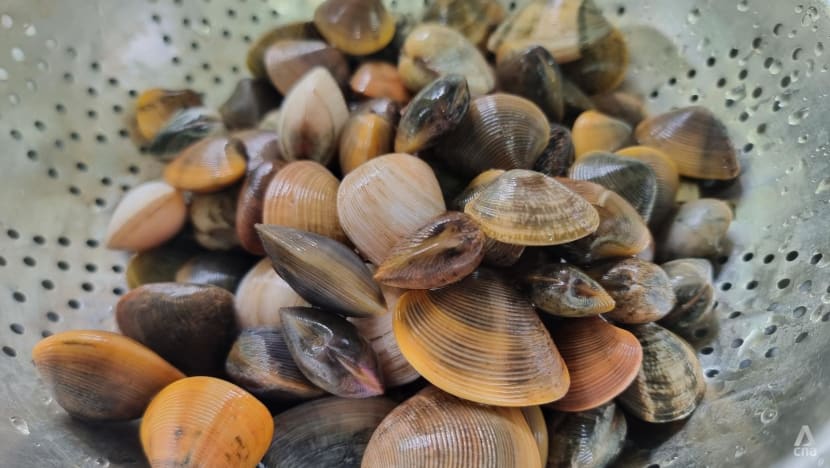
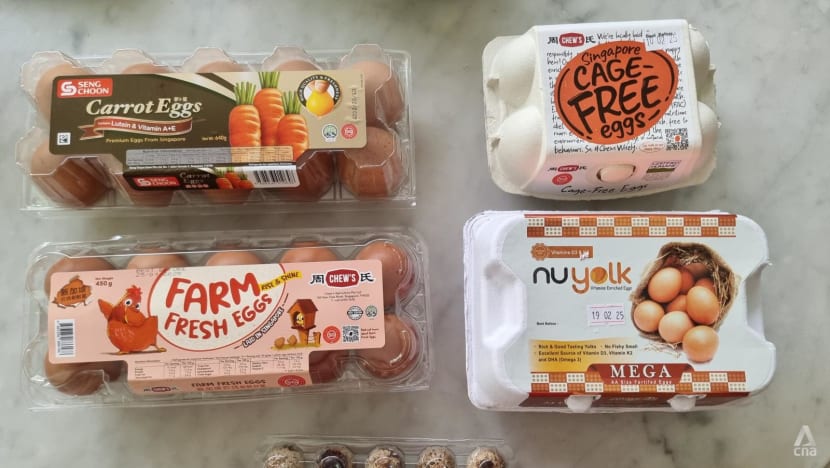
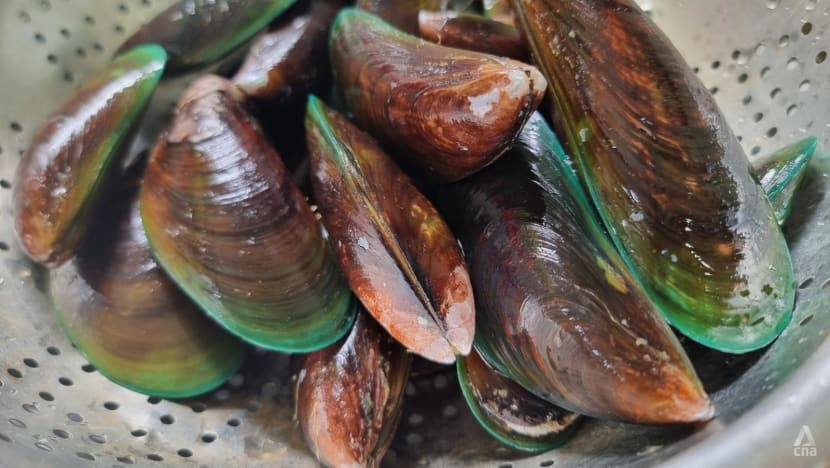
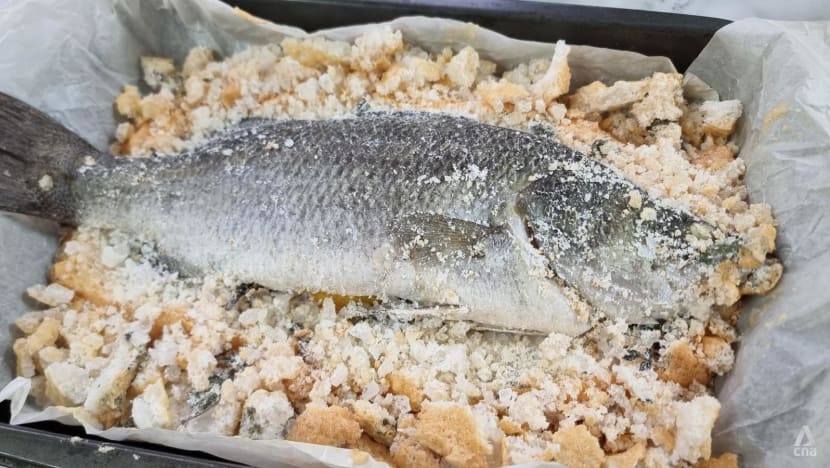
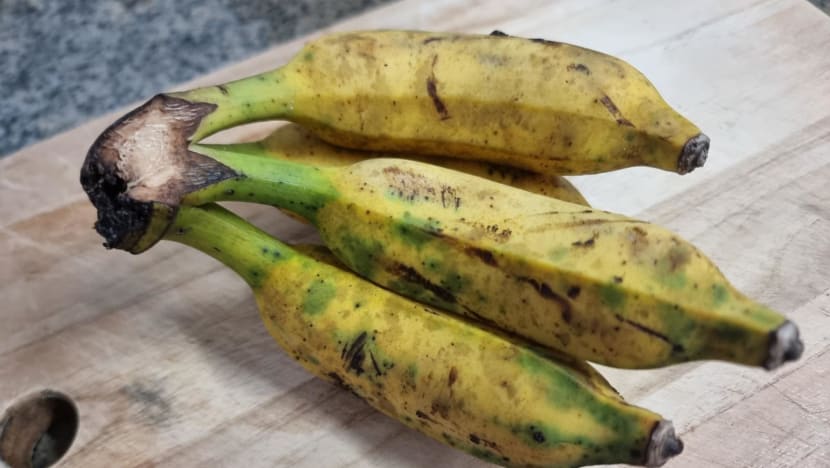
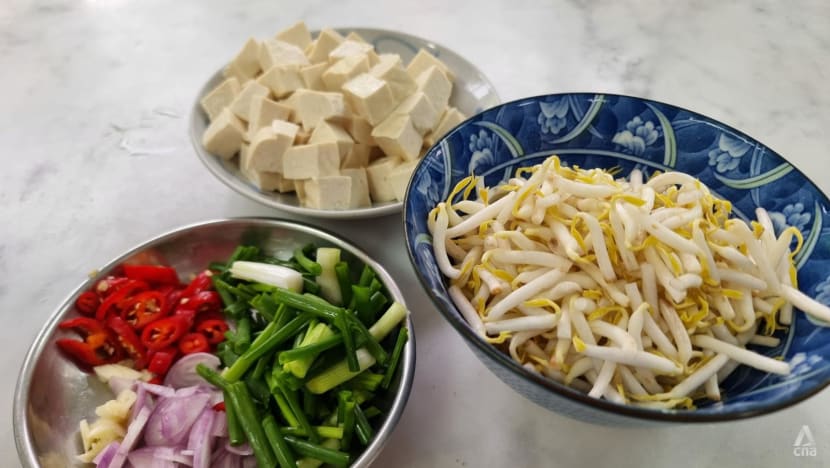
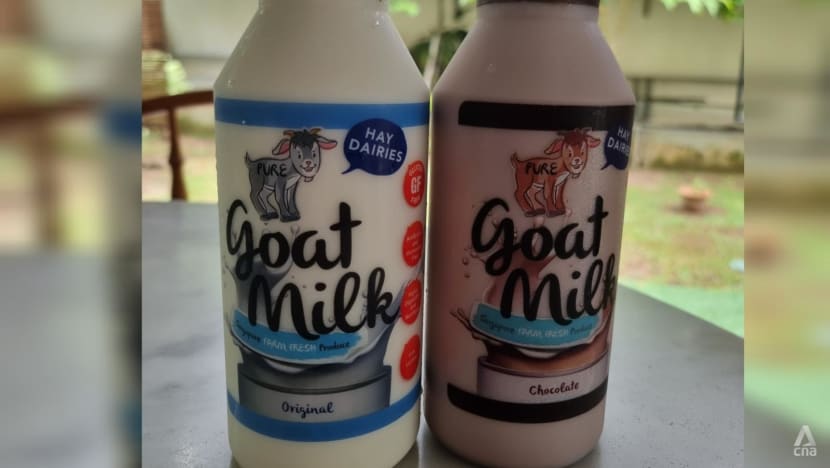
FRESH IS BEST
So I ended up having much more fish and green vegetables compared to my usual.
After reviewing my week's meals, Ms Karthika Thirugnanam, a clinical nutritionist and dietitian from Tucker Medical clinic, said the diet was somewhat lacking in variety, particularly in protein sources - but overall fairly balanced.
For optimal nutrition and gut health, it would be ideal to eat a wider variety of foods as that helps promote diversity in one’s gut microbiome.
However, it’s natural to have fewer choices if eating farm-to-table, making that diversity a good-to-have rather than a primary goal, said Ms Karthika.
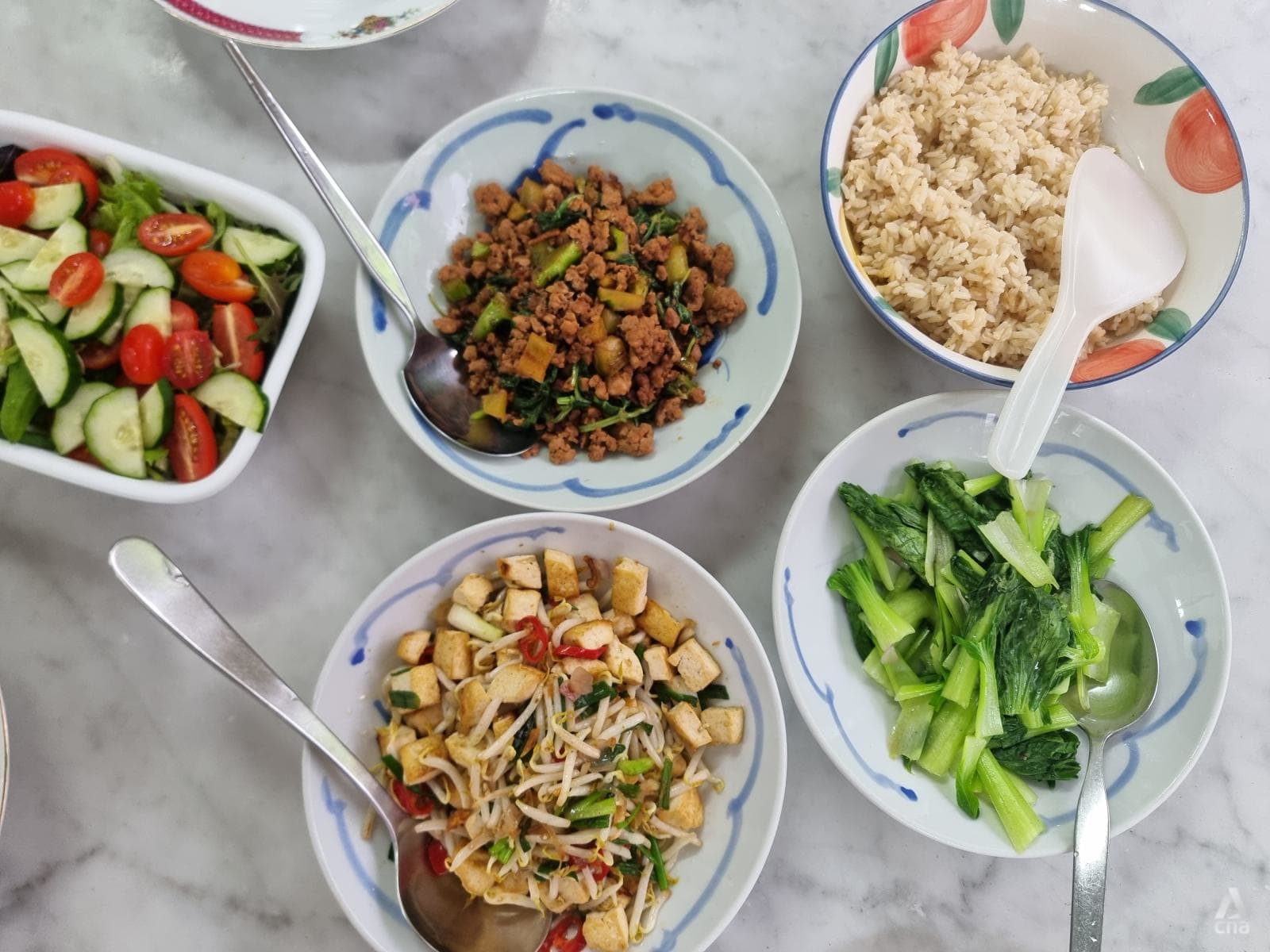
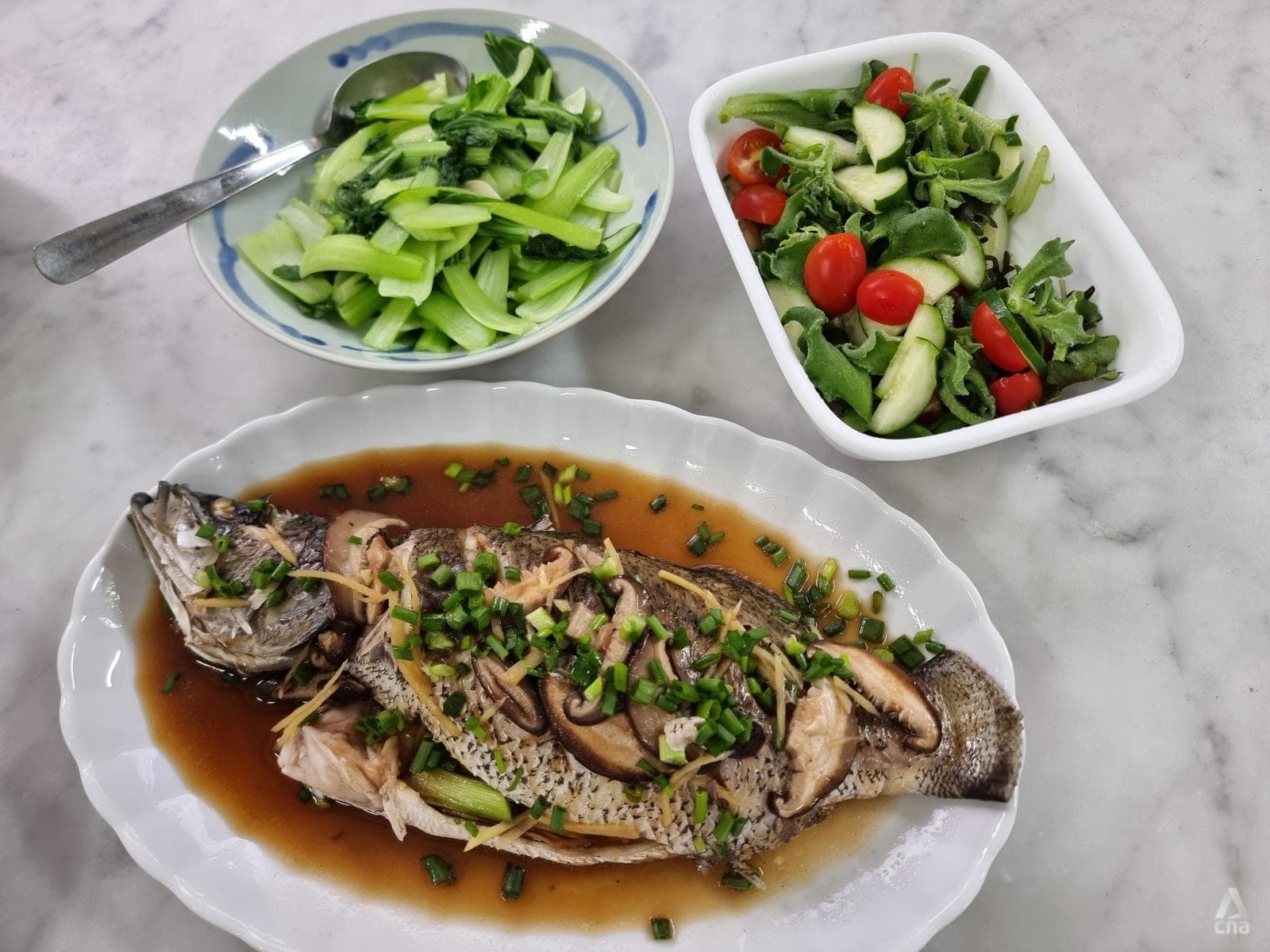
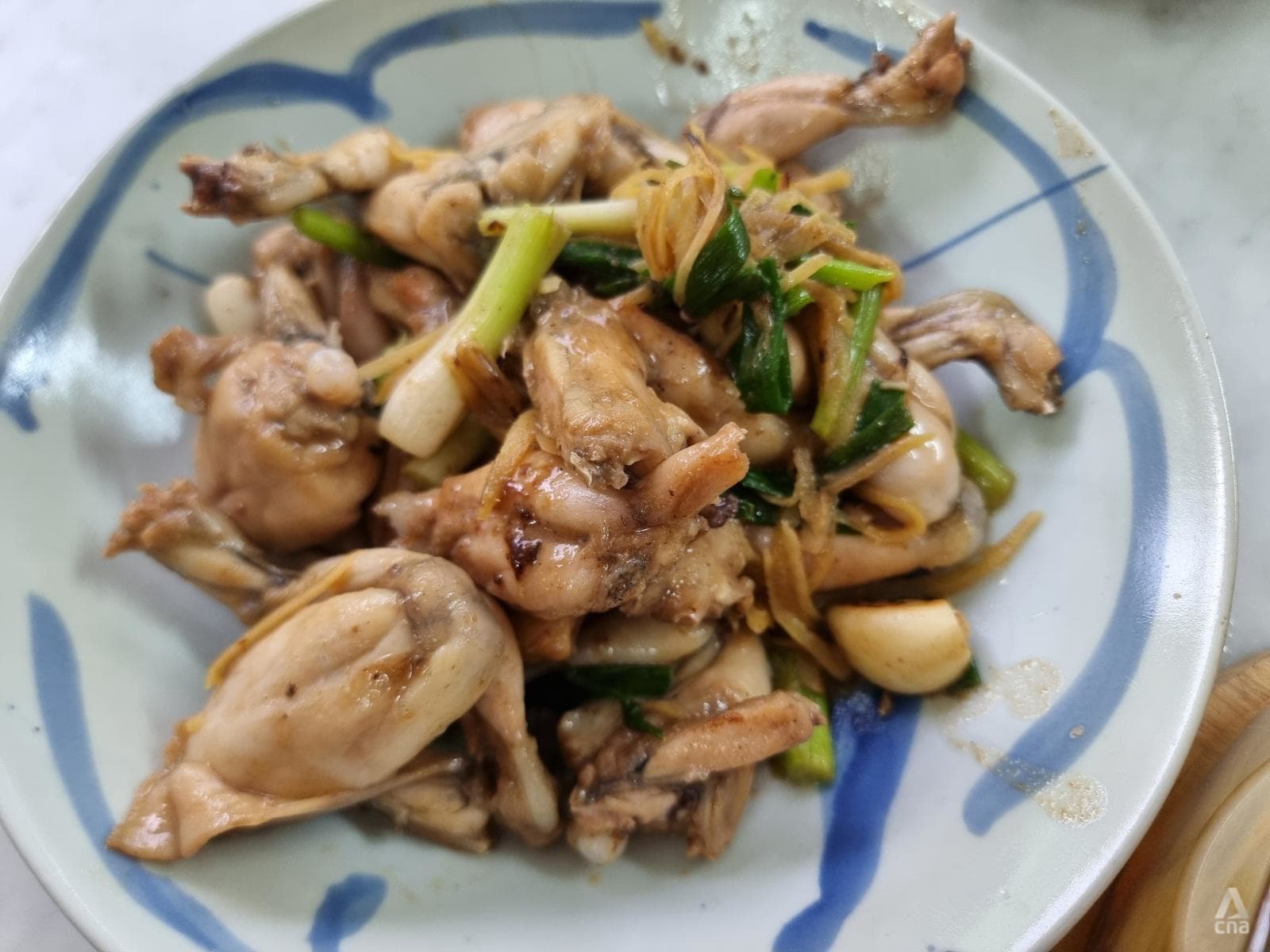
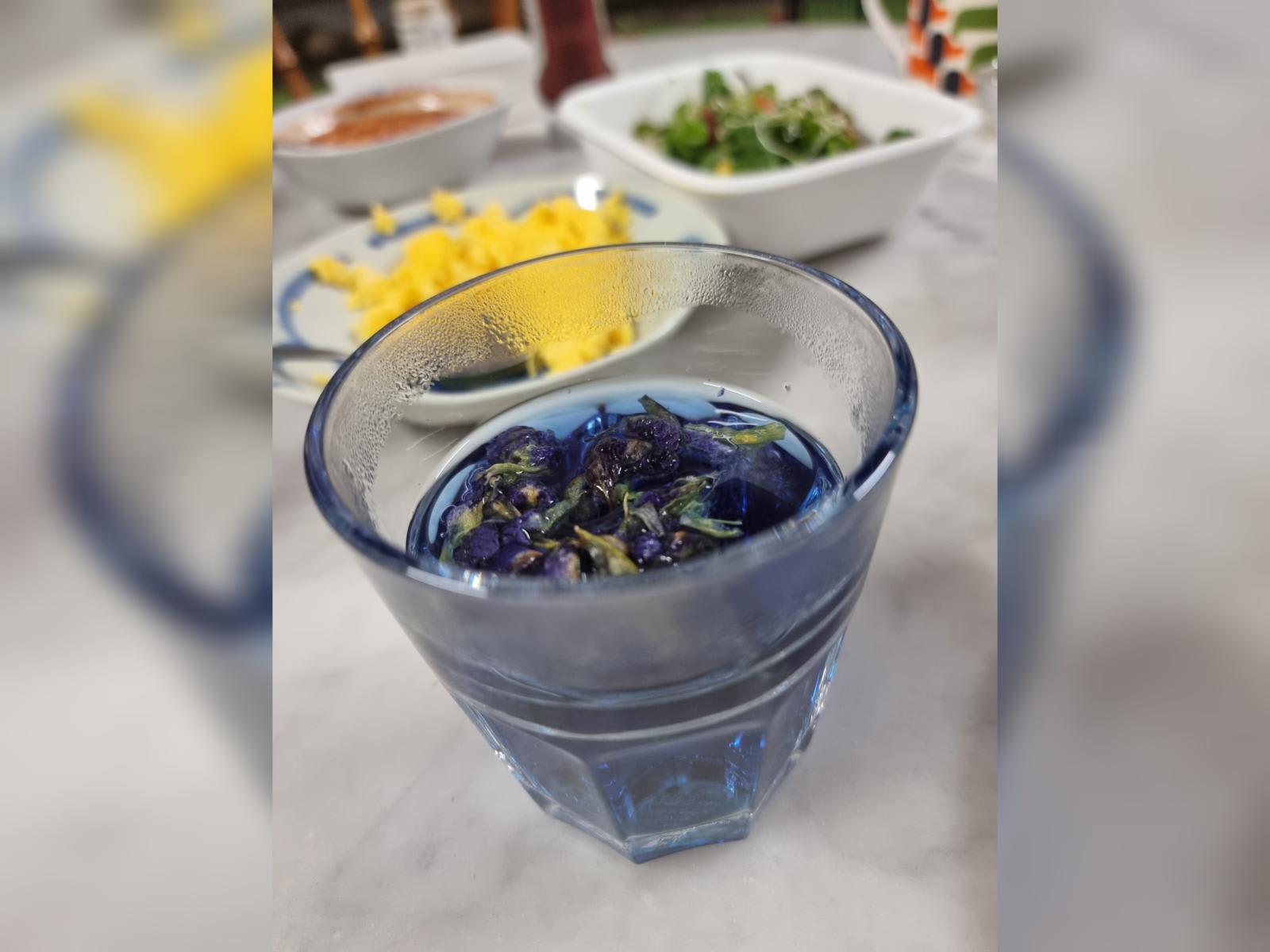

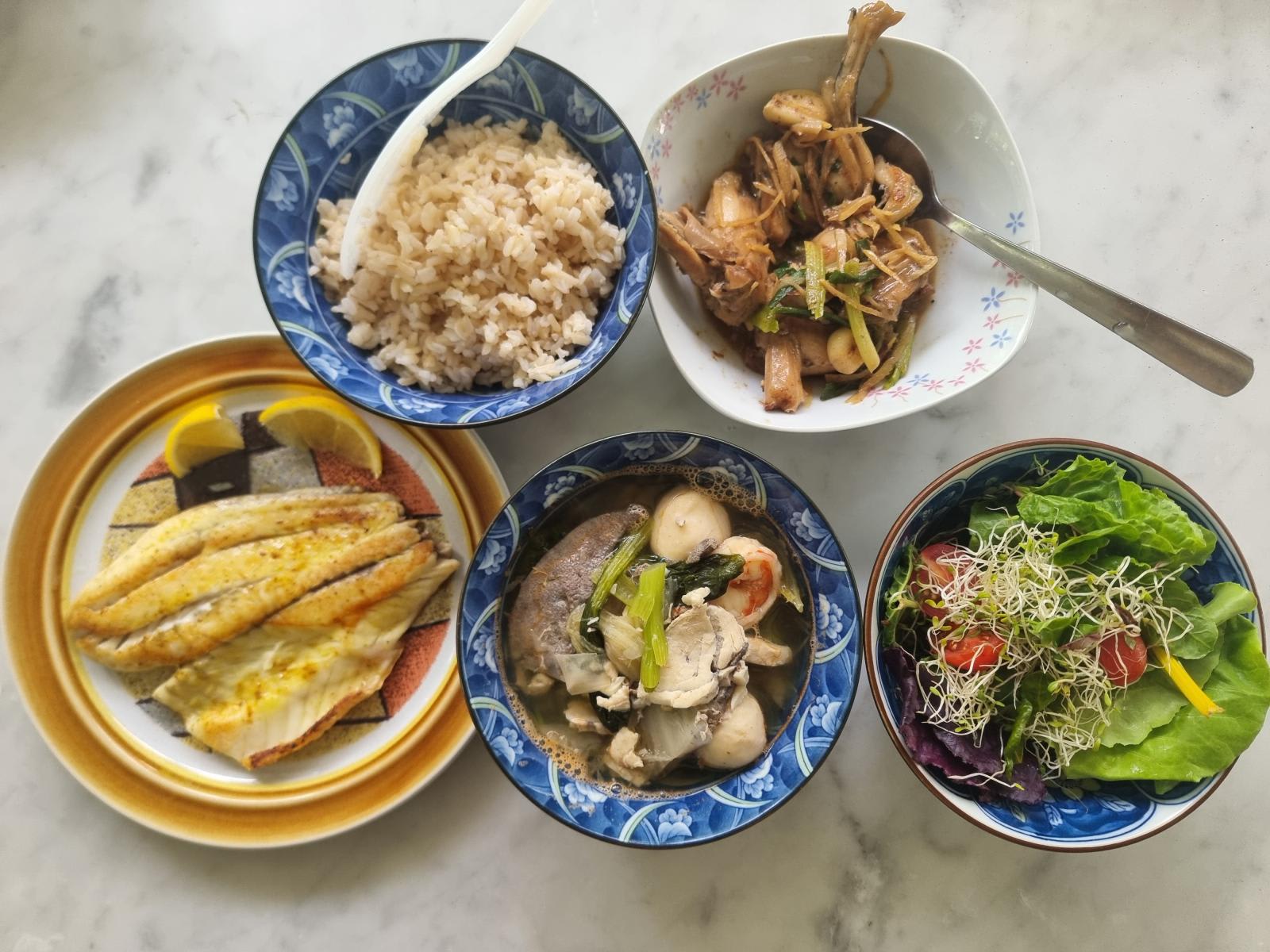
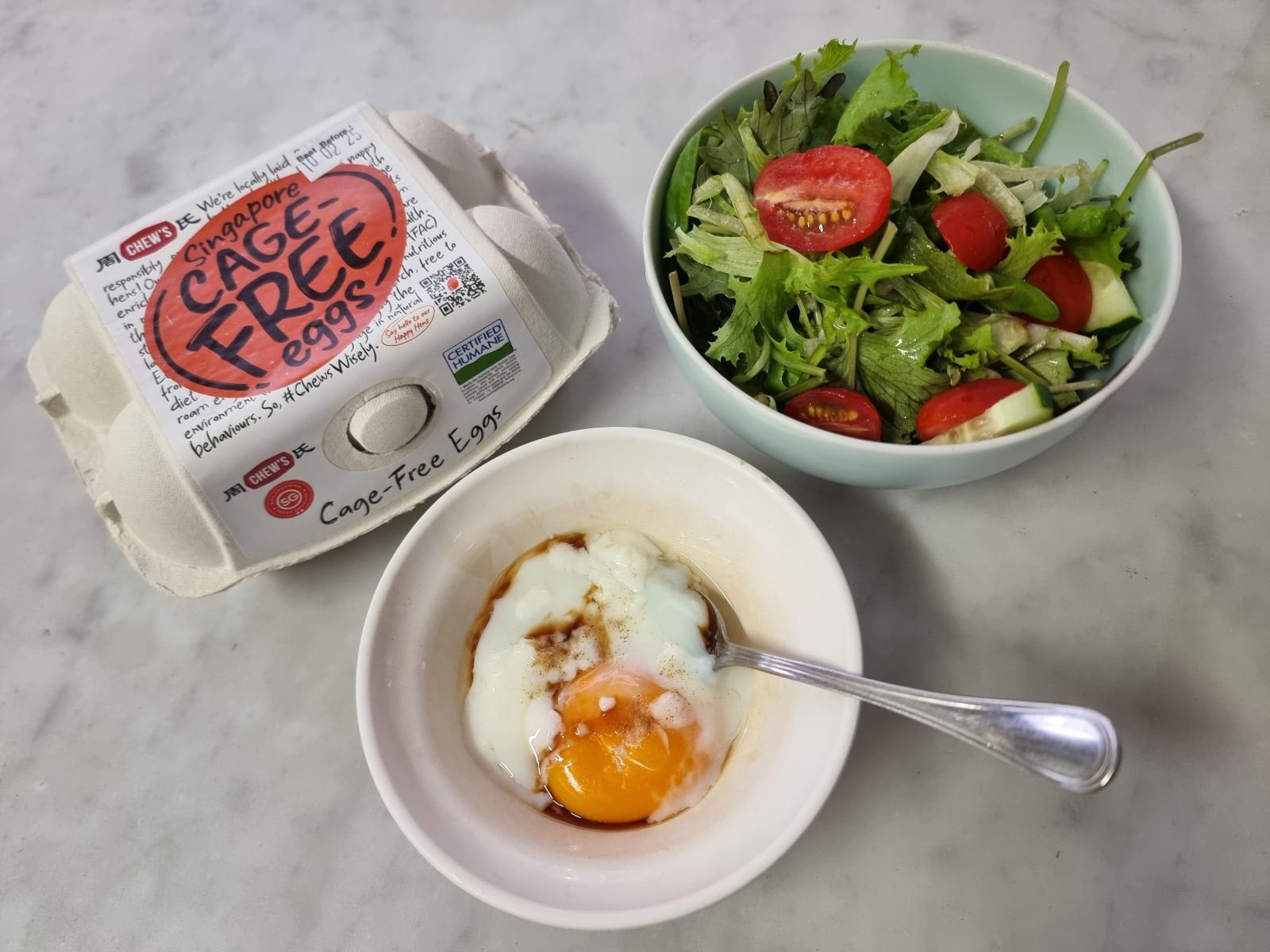
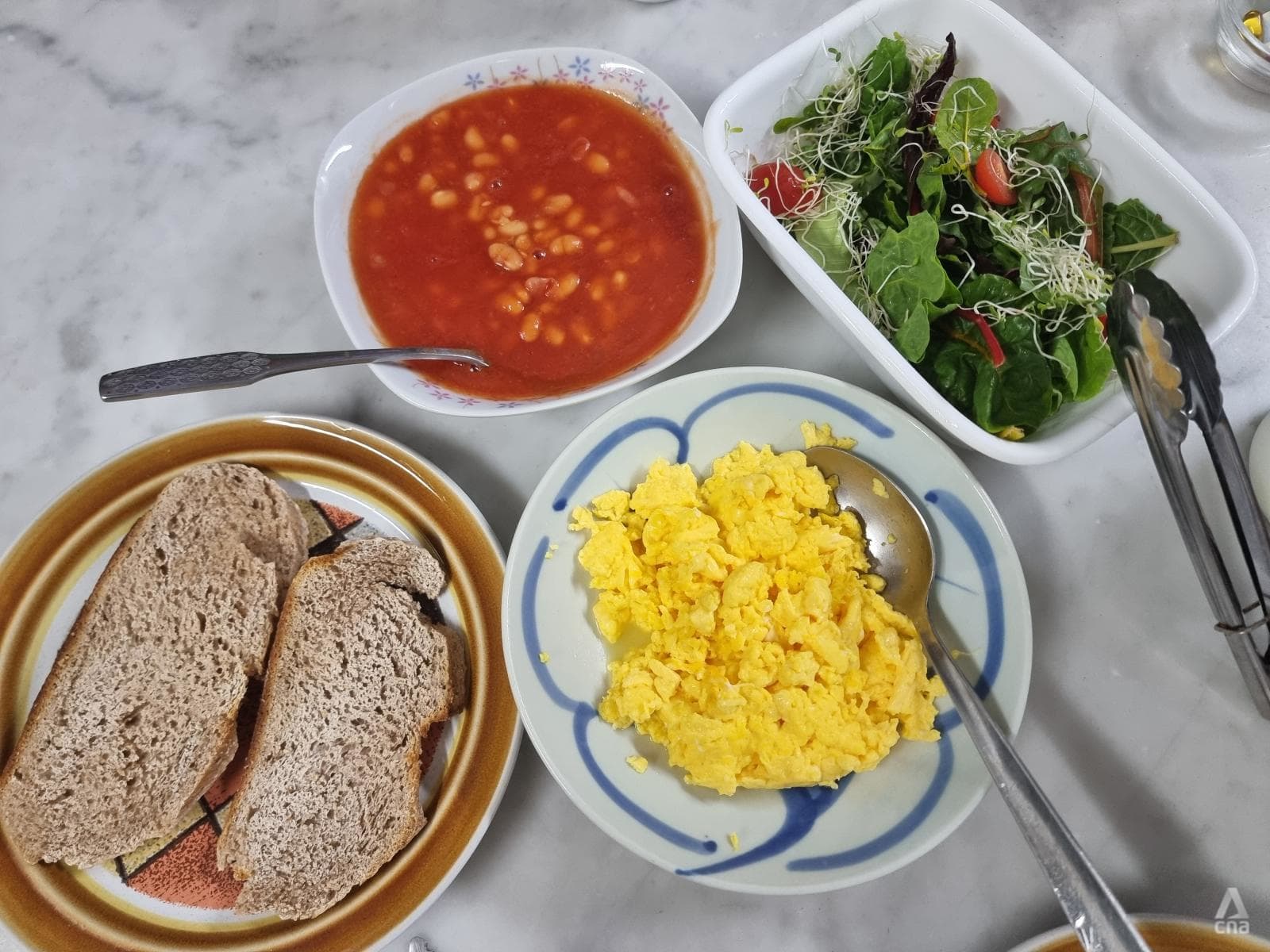
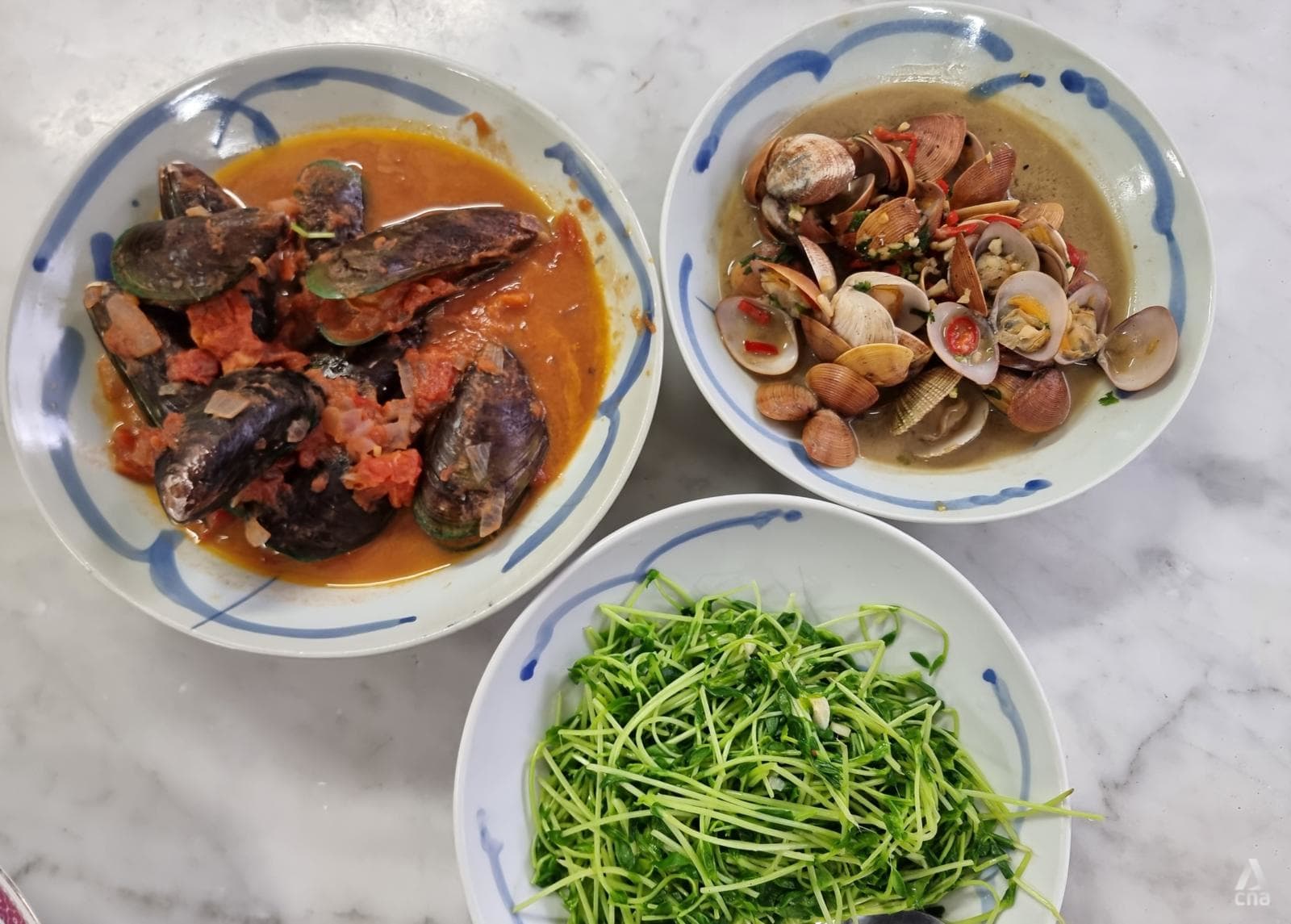
On the plus side, fish and eggs are sources of complete proteins, providing all the amino acid building blocks necessary for our bodies.
Eating them - as well as vegetables - fresh is also a boon.
“B vitamins and vitamin C are heat sensitive, and so when we harvest and we consume food in a shorter interval, there's going to be less loss of these nutrients,” said Ms Karthika.
Omega-3 fatty acids, which are found in fish, also can be lost over time especially if exposed to heat, although this is hard to quantify.
Similarly, eggs are a good source of choline, a nutrient essential for brain health, and choline levels fall over time along with the freshness of the egg.
Another advantage of local vegetables? They are often pesticide-free.
“There's constant research coming out on various pesticides having long-term chronic illness associations," said Ms Karthika.
“(Not using pesticides) actually becomes very challenging when you get something from overseas. If something has to travel two weeks, three weeks, and still look like a blueberry, still look like spinach ... They need those pesticides."
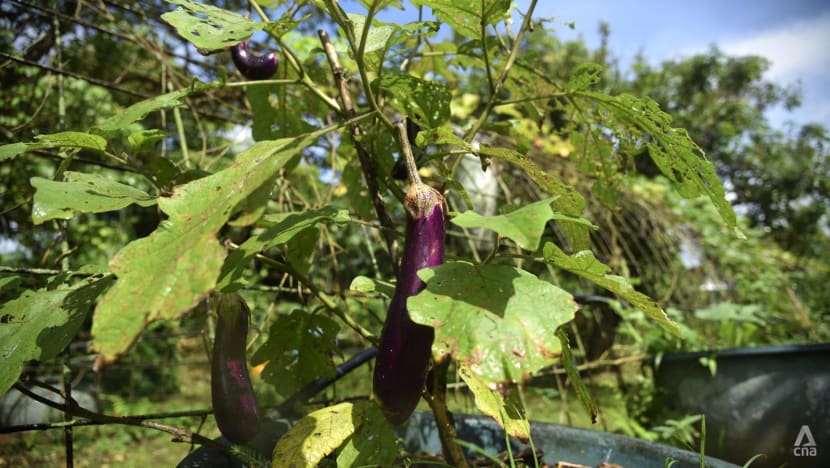
But food isn't just about its chemical and nutritional components. There's also an “emotional landscape” to what we eat, Ms Karthika added.
Despite not being deprived nutritionally, I certainly had cravings for foods I used to take for granted, like fruit, chicken and even rice and noodles (though I did eat some rice during the week).
CONSTRAINTS AND CHOICES
The limited variety of crops in Singapore comes down to the space issue, as less than 1 per cent of land here is for agriculture.
As Singapore pushes for more local production to enhance national food security, there are also considerations on exactly what the country should produce, said NTU's Prof Chen.
The main categories are eggs, aquaculture (fish and seafood), vegetables and alternative foods such as microbial proteins, cultivated meat and plant-based proteins.
The selection is based on Singapore’s existing capabilities and natural potential, said Prof Chen.
For example, there's already an existing high production level of eggs, and there are surrounding open seas for aquaculture.
Singapore also has robust “technology-ready infrastructure” to provide urban solutions for alternative foods. One example is bioreactors - devices or systems to grow cells in a controlled environment, which can be used for pharmaceutical production, fermentation or to produce lab-grown meat.
“However, our limited farmland … would mean that all meat from livestock farming would come from overseas import,” said Prof Chen.
“The same space constraints also mean that we would not grow all the vegetables in Singapore, and (we are) so far focusing on high-value types of vegetables (kale, lettuce, microgreens) for economic reasons. This explains why we see so much locally produced salad leaves.”
Fish farmed in Singapore tends to be seabass, barramundi, snapper and grouper. The species chosen depends on how fast they grow; how resistant they are to infections in the open sea environment; and how popular they are with local consumers.
Prof Chen also pointed to COVID-19 disrupting the 30 by 30 plan, which was launched in 2019.
Singapore is hence evaluating three years of progress rather than six, he said, and "therefore it seems rather premature to draw any conclusion on our local farming’s future”.
SFA said the agri-food sector will need time to develop and for viable business models to emerge.
The agency added that it has been supporting farms through initiatives such as the Agri-Food Cluster Transformation (ACT) Fund and an industry-level supply-demand aggregator for farms and retailers.
“It will take some time for the impact of these initiatives to be visible and SFA expects production to gradually increase over the next few years,” said a spokesperson. Ultimately, the combination of space constraints and economic considerations point to 30 by 30 perhaps being more of an “aspirational” goal.
“The numbers (30 by 30) are important to communicate the message to Singaporeans on where we stand currently and how much we aim to achieve," said Prof Chen. "There is (now) greater awareness and interest in food security among Singaporeans.”
免責聲明:投資有風險,本文並非投資建議,以上內容不應被視為任何金融產品的購買或出售要約、建議或邀請,作者或其他用戶的任何相關討論、評論或帖子也不應被視為此類內容。本文僅供一般參考,不考慮您的個人投資目標、財務狀況或需求。TTM對信息的準確性和完整性不承擔任何責任或保證,投資者應自行研究並在投資前尋求專業建議。
熱議股票
- 1
- 2
- 3
- 4
- 5
- 6
- 7
- 8
- 9
- 10